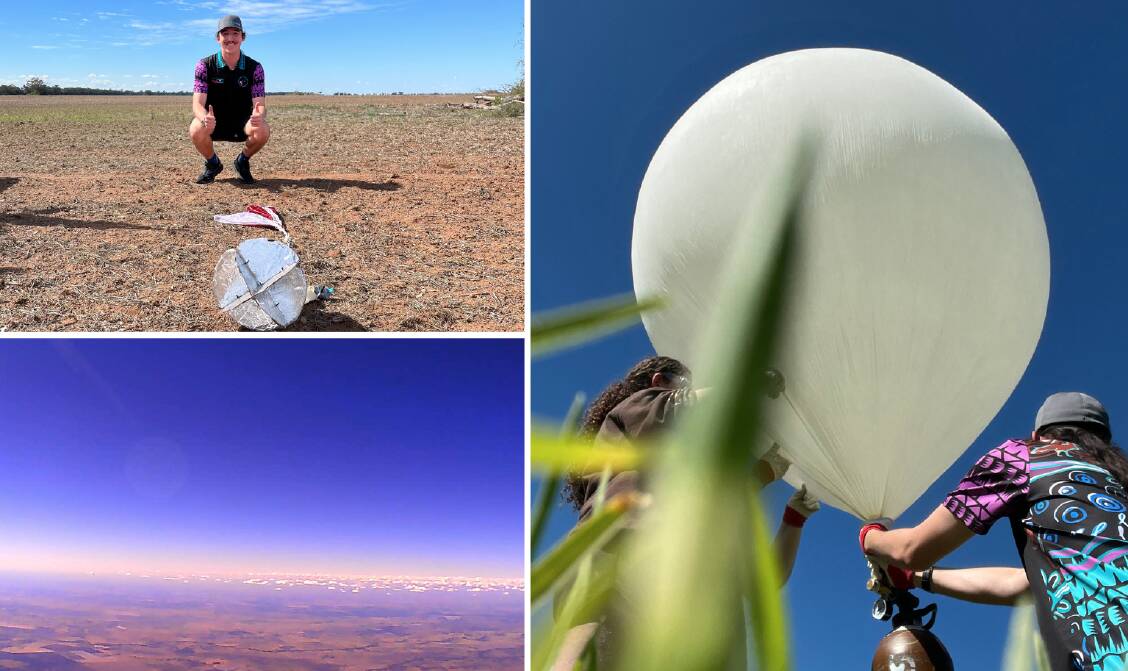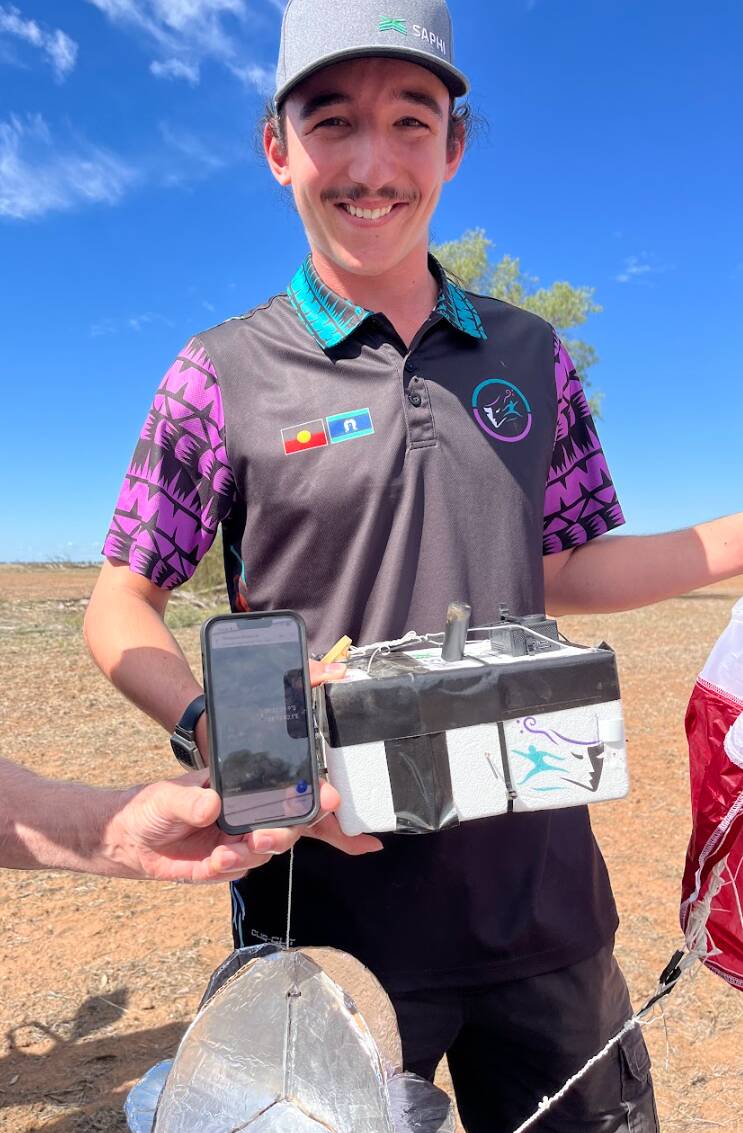
A Newcastle student has launched a home-built weather balloon 28,000 metres into the sky, taking his fascination with space to the next level.
Hunter School of the Performing Arts (HSPA) school captain Nolan Sobel-Read had always questioned how close he could get to space.
When he began a STEM-based project two years ago, the sky was his limit.
"I've always been very interested in space and in engineering and so my question was how close can I get to space with this project?," he said.
After brainstorming, the 17-year-old found the Bureau of Meteorology launches weather balloons each day to high altitudes to gather forecast information.
"So I thought why can't I do that as well? I called CASA (Civil Aviation Safety Authority) and asked if it was legal to do this and went through the processes and procedures," he said.
With sponsorship from DIYODE magazine and industry collaboration with Mayfield's SAPHI Engineering founder Cameron Owen, Mr Sobel-Read was able to create a 1.2-kilogram latex weather balloon with sensors and coding.
"It was quite a long project because the code is quite complex to be able to do the number of sensors on board that need to be able to send data back to earth via satellite. There's very few ways to get data from that high up," he said.
SAPHI engineering founder and director Cameron Owen said he thoroughly enjoyed playing a role in the project.
"We have always been passionate about education and supporting people with an innovative idea. It was a great blend of both," he said.
"To impart some of our expertise and see Nolan take it and commit to the long haul to make this project a reality is a testament to his determination."
He said coding was something the company "lives and breathes" and were more than happy to assist Mr Sobel-Read in.
"It's remarkable what comes from it. It truly felt like we were Houston in our office watching the live stream of the balloon going up and tracking its trajectory from the launch site in Nyngan," he said.
Time to take-off
The balloon was launched from Nyngan High School on Friday, April 12 at 11.30am.
It flew 130 kilometres over two-and-a-half hours.
"It flew two to three times higher than a commercial airliner flight," Mr Sobel-Read said.
Nyngan was chosen as the take-off location for its eastward wind-driven trajectory of about 100 kilometres, avoiding the ocean, major cities and the Great Dividing Range.
"If I were to launch at Newcastle, it would fly out over the ocean and I would never find it again, slightly less of that it'll land on the city, slightly less of that and it'll land in the Great Dividing Range and be hard to retrieve," he said.
"Nyngan was a good point where I could launch and it would be unlikely to land in a tree, but still close-ish to Newcastle so that we could drive there in a day."
He also wanted to give the opportunity to another community to experience the project, "maybe without the same resources as I do in the city".
"... and it was really cool. Everyone got involved in the countdown and there were two physics students who helped fill the balloon and do the final checks," he said.
When inflated on the ground the balloon was two metres in diameter with three-and-a-half cubic metres of helium inside.
"As it rises because the pressure on the outside decreases, it grows in size until it's about nine or ten metres in diameter until it pops," he said.
The retrieval
The balloon was parachuted down onto a property in Warren, north-west of Nyngan and Mr Sobel-Read began the process of retrieving it.
"We tracked it throughout the flight using GPS that we had coded beforehand and then we had to work out who's land it was on," he said.
Through contacts at Nyngan High School and assistance from Warren Police Station they tracked down the property owner who took them out to get the balloon.
"I have it at home now where we are working on pulling apart the data," Mr Sobel-Read said.
He said there was "lots of interesting" information to get from the weather balloon.
"We got some very cool images. Not everything worked 100 per cent as planned. Some cameras stopped working, temperature sensors didn't work quite right but that's what happens when you're trying to launch something almost to space," he said.
"We're working on pulling apart the data and the patterns to see what happens at those very high altitudes."

'A culmination of effort'
Mr Sobel-Read said he learned a lot of new technical elements such as coding and how collaboration could lead to amazing experiences.
"I got help from my teachers at HSPA, the teachers at Nyngan, Cameron and my own parents - I gained a lot of knowledge from working with all of those people and I'm very grateful."
"I think that was probably the highlight, the culmination of effort for this amazing experience."
"As school captain I really want to represent the school in as many ways as I can and give opportunities to students both at my schools and other schools," he said.
Mr Sobel-Read said he wants to pursue engineering as a career after school while living and studying in Europe.







